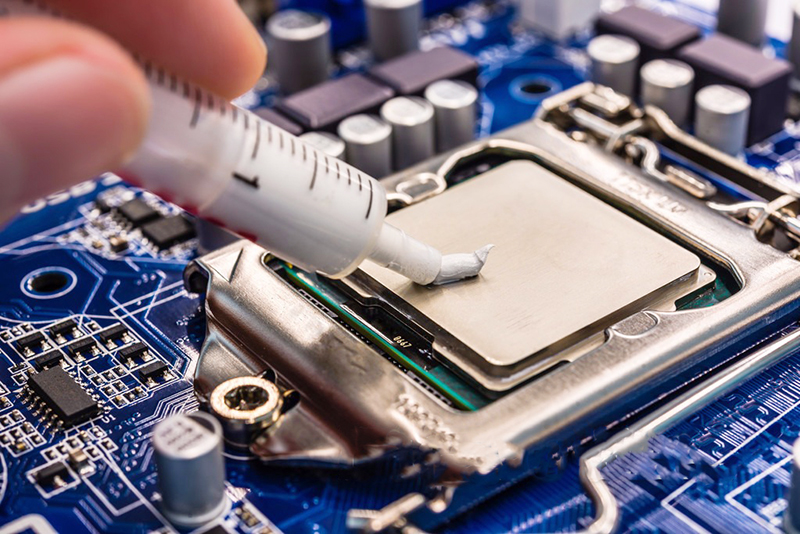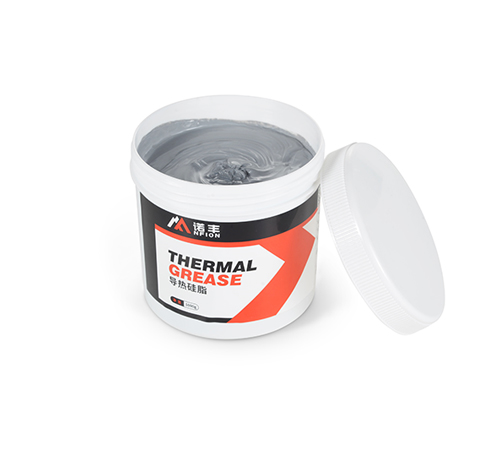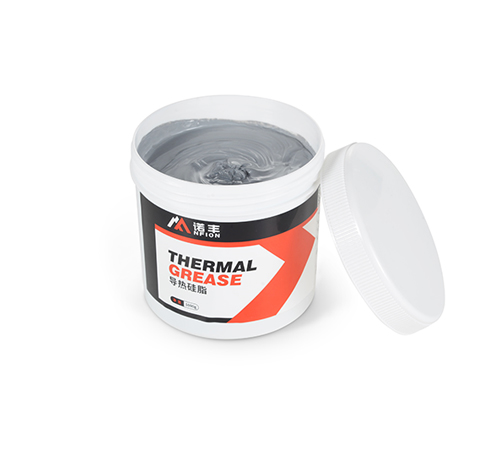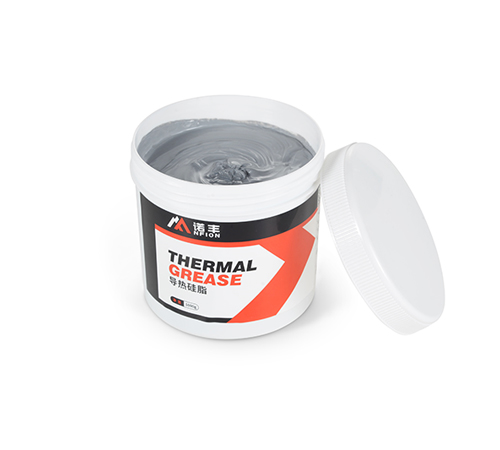
Introduction
Thermal paste, also known as thermal grease or thermal compound, plays a crucial role in electronic and computing devices by facilitating efficient heat transfer between components. It is a thermally conductive material applied between a heat-generating component, such as a CPU or GPU, and a heatsink. Without thermal paste, the effectiveness of cooling solutions would be significantly compromised, potentially leading to performance degradation and hardware failure.
NFION Thermal explores the purpose of thermal paste, its working principle, key properties, and the impact of using (or not using) it in thermal management applications.
Why Is Thermal Paste Necessary?
Electronic components, especially high-performance processors, generate substantial amounts of heat during operation. Efficient heat dissipation is critical to maintaining stability and extending the lifespan of these components. While heatsinks are designed to absorb and disperse heat, they cannot make perfect contact with the heat source due to microscopic surface imperfections.
Even if two surfaces appear smooth, they contain tiny air gaps, which act as insulators and impede heat transfer. Thermal paste fills these gaps, ensuring optimal thermal conductivity between the heat source and the heatsink.
Key Functions of Thermal Paste:
● Eliminates Air Gaps: Air has poor thermal conductivity, and thermal paste effectively displaces trapped air between surfaces.
● Enhances Heat Transfer: By reducing thermal resistance, it allows heat to transfer more efficiently to the heatsink.
● Prevents Overheating: Proper thermal management prevents thermal throttling and hardware damage.
How Does Thermal Paste Work?
Thermal paste consists of a blend of thermally conductive materials suspended in a carrier fluid. When applied between a CPU/GPU and a heatsink, it spreads to create a uniform contact layer, optimizing heat dissipation.
Thermal Conductivity and Performance
Thermal pastes have different thermal conductivity values, typically measured in watts per meter-kelvin (W/m·K). Higher values indicate better heat transfer efficiency. The typical range for thermal pastes is 1-6 W/m·K, with high-performance variants exceeding 10 W/m·K.
Composition of Thermal Paste:
1. Metal-Based: Contains particles of silver, aluminum, or copper for superior conductivity.
2. Ceramic-Based: Uses non-conductive compounds like aluminum oxide or zinc oxide.
3. Silicone-Based: Often found in general-purpose applications with moderate conductivity.
4. Carbon-Based: Includes diamond or graphene-enhanced formulas for high-end cooling solutions.
Impact of Using (or Not Using) Thermal Paste
The presence or absence of thermal paste directly influences system performance and longevity.
✅ With Thermal Paste:
● Efficient heat dissipation
● Stable CPU/GPU performance
● Reduced risk of overheating
● Extended component lifespan
❌ Without Thermal Paste:
● Increased thermal resistance
● Poor heat transfer, leading to excessive temperatures
● Potential thermal throttling and performance drops
● Higher likelihood of long-term hardware degradation
Choosing the Right Thermal Paste
Selecting an appropriate thermal paste depends on application requirements and performance expectations.
Factors to Consider:
● Thermal Conductivity: Higher values improve heat transfer efficiency.
● Electrical Conductivity: Non-conductive options prevent short circuits.
● Viscosity & Spreadability: Determines ease of application.
● Longevity & Stability: Some pastes dry out faster than others, requiring more frequent reapplication.
For high-performance applications such as gaming PCs and workstations, metal-based or carbon-based pastes are preferred. For general use, ceramic or silicone-based thermal pastes provide a balance between performance and safety.
Proper Application of Thermal Paste
Applying thermal paste correctly is crucial for maximizing its effectiveness.
Best Practices:
1. Clean the Surface: Remove old thermal paste using isopropyl alcohol.
2. Apply an Appropriate Amount: A small pea-sized or thin spread is sufficient.
3. Ensure Even Distribution: The heatsink’s pressure will spread the paste, but excess application should be avoided.
Overapplication can lead to spillage, while underapplication may leave air gaps, reducing efficiency.
Conclusion
Thermal paste is an essential component in thermal management, ensuring efficient heat transfer and preventing overheating in electronic devices. By eliminating air gaps and optimizing heat dissipation, it plays a vital role in maintaining performance and hardware reliability.
Selecting the right thermal paste and applying it correctly are key factors in achieving optimal cooling efficiency. Whether in gaming PCs, industrial electronics, or high-performance computing, thermal paste remains a fundamental part of thermal interface materials, safeguarding devices against excessive heat buildup.

 CN >
CN >



